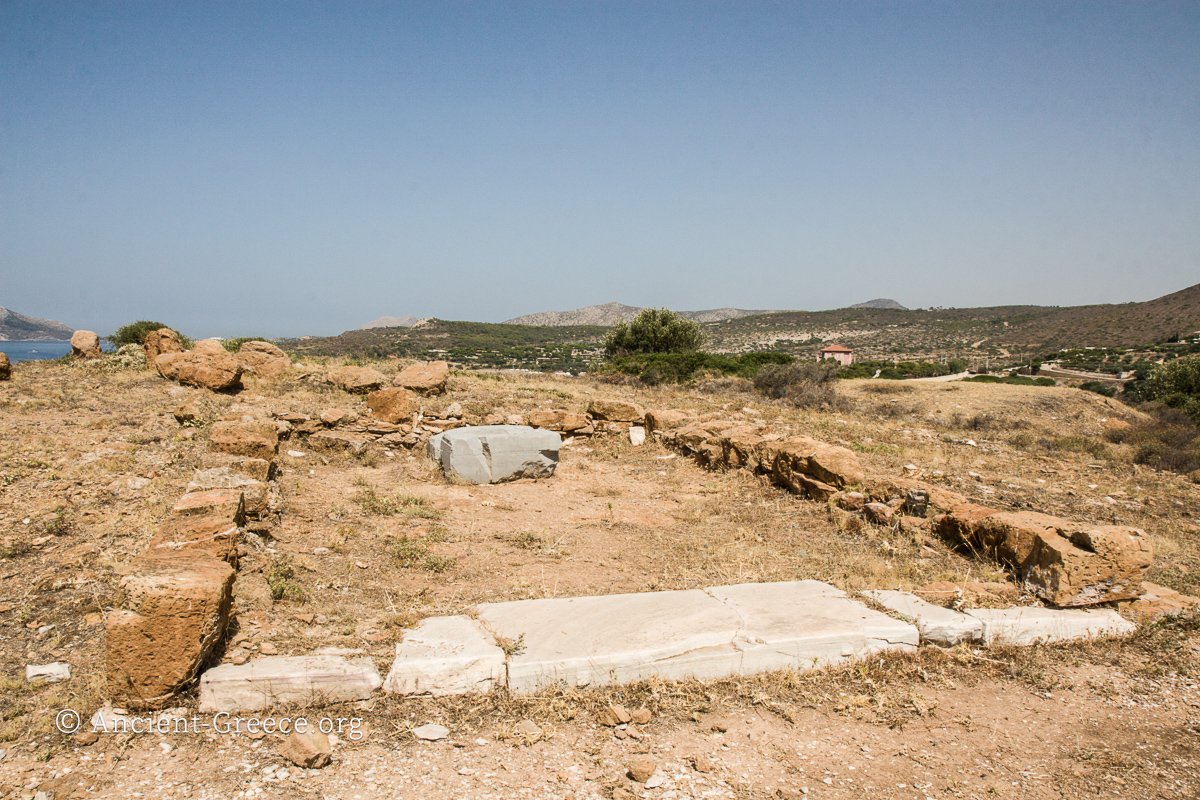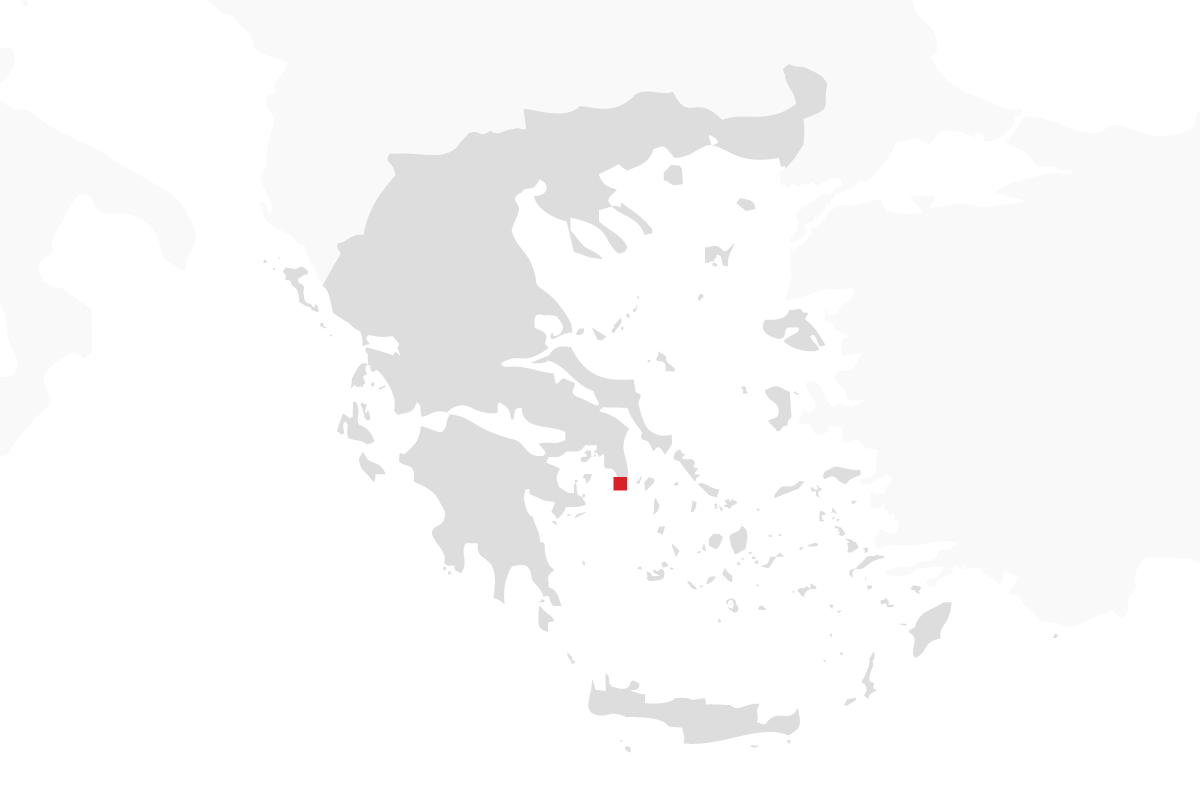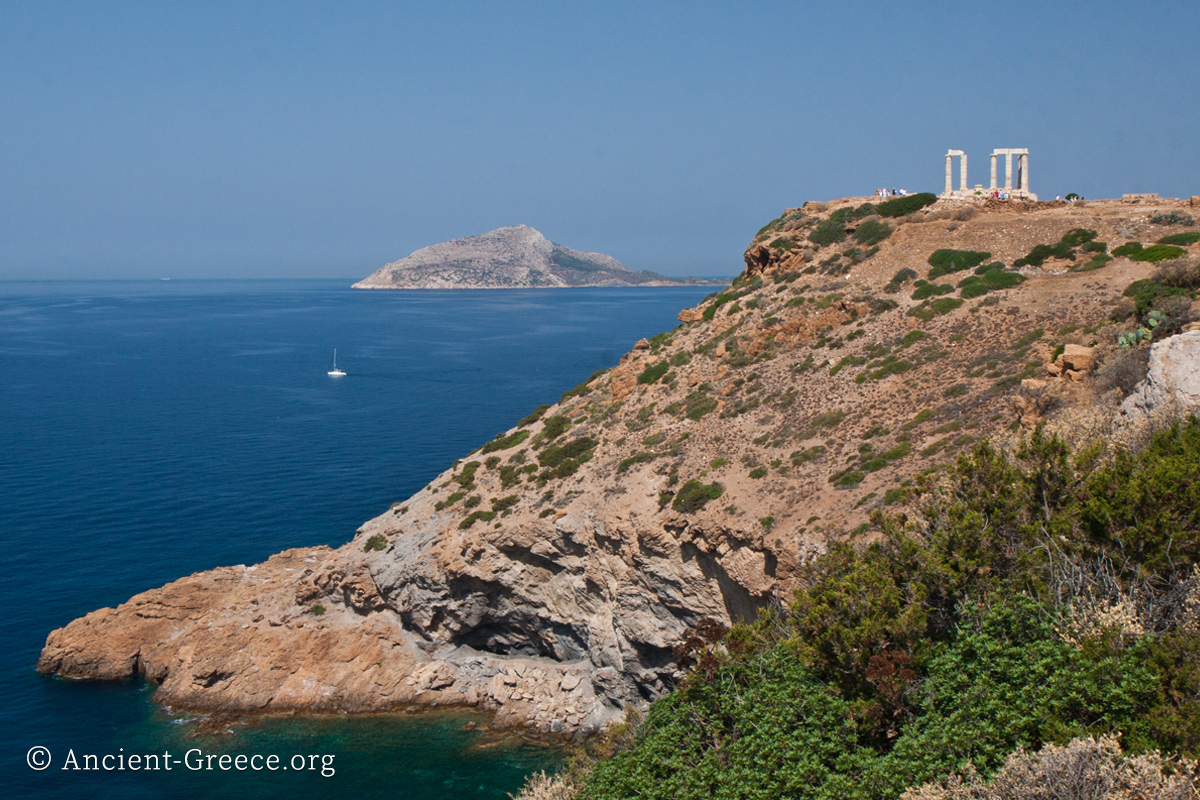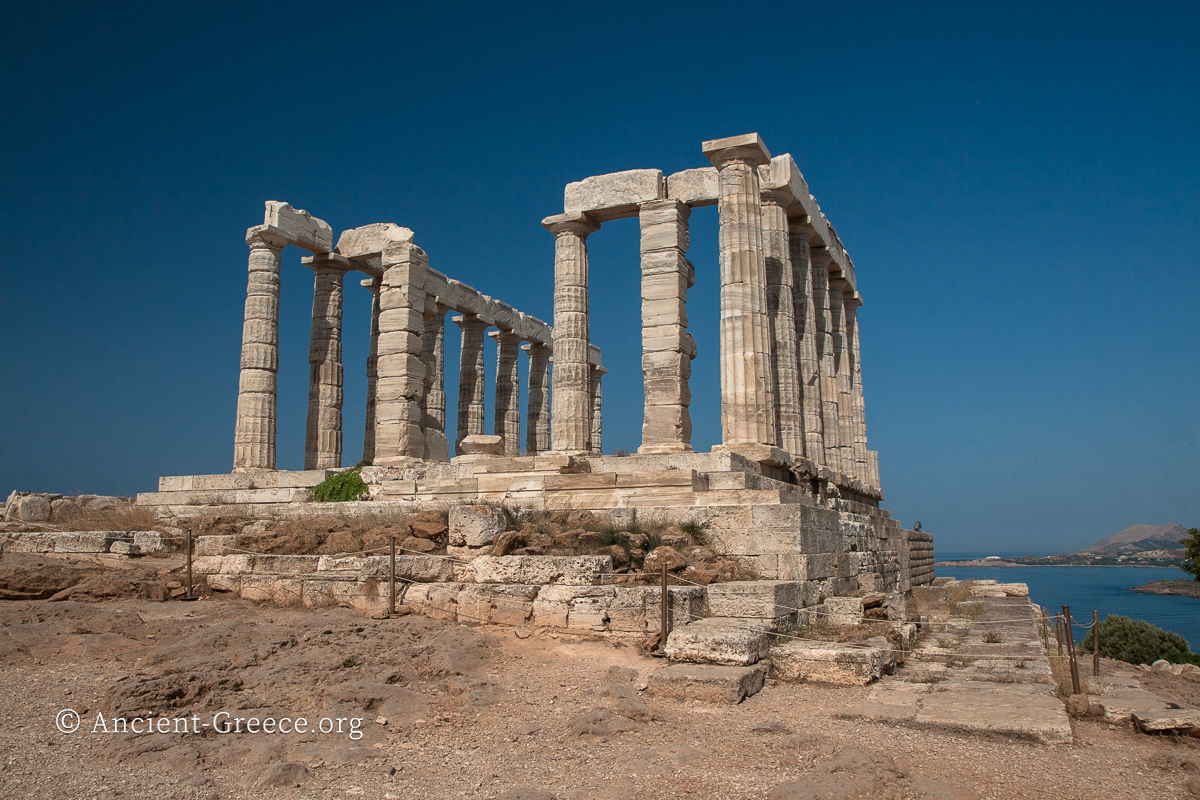
On this page:
The sanctuary of Athena Sounias (nominative singular case: Αθηνά Σουνιάς; genitive singular case: Ναός της Αθηνάς Σουνιάδος; Often transliterated as: Sounia, Sounias, Souniados) is built on a low hill in Sounion, a short distance from the better preserved and more visible Temple of Poseidon.
Very little of the temple of Athena or the sanctuary remains on site today besides traces of foundations and bases of columns and statue.
Sounion was an important area for the Athenians because it was in close proximity to the seafaring lanes it depended upon for food, goods, and defense, as well as to the Lavrion silver mines that provided the city with wealth.
History
The temple of Athena Sounias was erected in 470 BCE to replace an earlier building which was destroyed early in the 6th century BCE next to a peribolos identified as the burial mount of Phrontis, described as the helmsman of Menelaus by Homer:
“Meanwhile Menelaus and I were on our way home from Troy, on good terms with one another. When we got to Sunium, which is the point of Athens, Apollo with his painless shafts killed Phrontis the steersman of Menelaus’ ship (and never man knew better how to handle a vessel in rough weather) so that he died then and there with the helm in his hand, and Menelaus, though very anxious to press forward, had to wait in order to bury his comrade and give him his due funeral rites.”
The temple of Athena had a colonnade on the south side that faced cape Sounion, but not on the west or north sides, giving it an unusual appearance.
According to Levi (Pausanias, 9) “At least the facade of Athene’s temple must have been stripped in the first century A.D. and taken to Athens for a temple in the Agora, as several of its Ionic columns and a block of cornice have been found there. In the third century they were re-used in the Valerian wall.”
Its roof was supported by four columns, the bases of which are preserved along with the base of the cult statue that resided in the cella. Two of the Ionic capitals from the temple are exhibited today in the Agora Museum in Athens (see photos below).
Image Gallery

The scant remains of the temple of Athena Sounias are in the foreground. In the distance the temple of Poseidon columns crown the Sounion promontory.


A second, smaller temple in the sanctuary is surrounded by an oval enclosure and it has been associated with Artemis or the hero Phrontis, whose death at Sounion is described in Homer’s Odyssey. The foundations and base of a statue made of limestone are visible at the archaeological site.



The two capitals from the second Temple of Athena at Sounion are exhibited at the Agora Museum in Athens. They are some of the best preserved early Ionic examples form the mainland, and their painted decoration is still visible: anthemia at the corners of the volutes, as well as a double meander and scaled pattern, and an egg-and-dart moulding at the echinus.
460-450 BCE.
Related Pages




